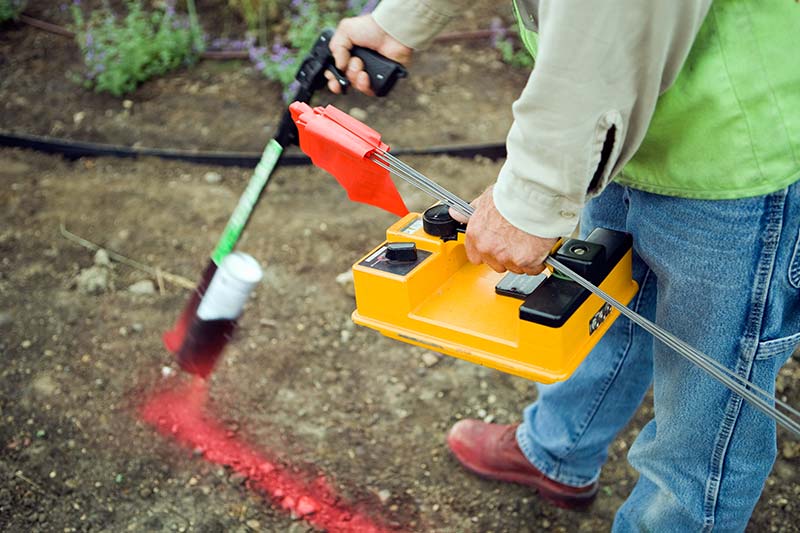
How Do Pipe & Magnetic Locators Work?
For any construction or excavation project, it is vital to determine if there are any buried utilities such as gas lines, electric or data cables, water mains and so on. Failing to first locate any and all mains could inadvertently result in costly damage, delays or even bodily harm.
Underground Locators
A device used to detect the buried “treasures” lurking beneath a work site is referred to as an underground utility locator. Sometimes, these devices are called “yellow sticks” due to their shape and bright-yellow coating.
They generally come in two types: a pipe locator or a magnetic locator. Each has a unique role in detecting different types of underground utilities.
Magnetic Locators
A common type of utility locator equipment is the magnetic location device. Its sole purpose is to detect objects made of iron or steel. In other words, it only works on ferrous materials.
Earth’s magnetic field induces a secondary magnetic field in any material affected by magnetism. In terms of utilities, such objects include manholes, valve boxes, steel survey markers and so on.
A magnetic utility locator detects these buried objects’ magnetic fields using dual sensors spaced along its shaft. Since the magnetic field of an object weakens with distance, the signal differential between sensors reveals that a ferrous object is present.
Such locators are very good at what they do. They detect large iron-containing objects up to 20 feet deep or survey nails up to 3 feet in depth. However, they cannot detect nonferrous metals such as aluminum or copper. That is the job of an underground cable locator.
Pipe and Cable Locators
An underground wire locator works on a different principle than a magnetic locator. It consists of an electromagnetic signal transmitter and a receiver. The signal’s frequency range is typically in channels from 60 Hz up to 60 KHz.
The signal is transmitted either by direct connection to the utility or induced via an electromagnetic wave through the ground. In the case of a live electric power cable, the receiver may simply detect the line’s natural 60 Hz emission.
These types of pipe locators are configured to transmit and receive using a single frequency or several. The transmitters may fit in a pocket or be enclosed in a larger case that is set on the ground. Where there are several utilities in close proximity — known as utility congestion — it is desirable to use multiple frequencies to separate the location of each main.
Plastic pipes or conduit, fiber-optic lines and other nonmetallic utilities can still be detected by a pipe locator if tracer wires are present or through the use of a mini-transmitter or sonde inserted in pipes.
Products for Every Utility Location Need
Sometimes it is fairly obvious, sometimes not, to determine the types of installations below a work area. Thus, the most versatile utility location services typically make regular use of both styles of utility locator equipment.
This is why Superior Instrument offers high-quality magnetic and pipe locators to its customers. Within each category, the products offer a variety of features to match your particular location service work profiles and personal preferences.